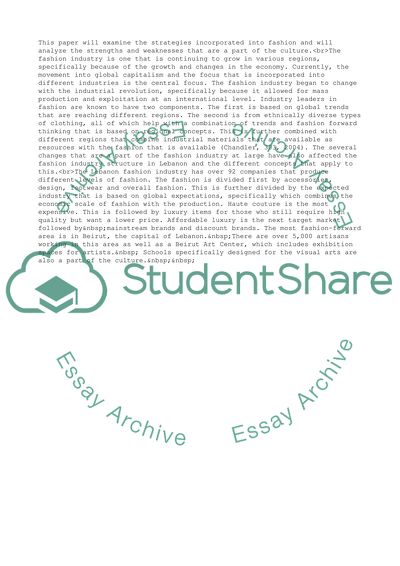Cite this document
(“The Fashion Industry of Lebanon, SWOT Assignment”, n.d.)
The Fashion Industry of Lebanon, SWOT Assignment. Retrieved from https://studentshare.org/business/1744085-industry-analysis-report-fashion-design-in-lebanon
The Fashion Industry of Lebanon, SWOT Assignment. Retrieved from https://studentshare.org/business/1744085-industry-analysis-report-fashion-design-in-lebanon
(The Fashion Industry of Lebanon, SWOT Assignment)
The Fashion Industry of Lebanon, SWOT Assignment. https://studentshare.org/business/1744085-industry-analysis-report-fashion-design-in-lebanon.
The Fashion Industry of Lebanon, SWOT Assignment. https://studentshare.org/business/1744085-industry-analysis-report-fashion-design-in-lebanon.
“The Fashion Industry of Lebanon, SWOT Assignment”, n.d. https://studentshare.org/business/1744085-industry-analysis-report-fashion-design-in-lebanon.


